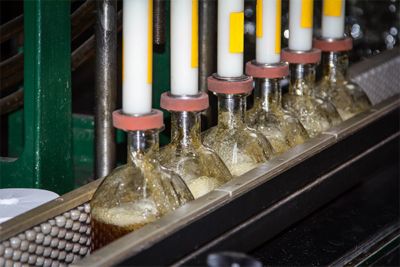ANSYS BLOG
May 21, 2020
Manufacturing Digital Twins Can Help Prevent Line Change Disruptions
During times of crisis, like the COVID-19 pandemic, manufacturing companies can struggle to meet the demand of everyday necessities.
We’ve seen this happen in real-time with the shortages of personal protective equipment (PPE), toilet paper and hand sanitizer in various locations during the lockdown.
One challenge is the complexities that go into maintaining or increasing uptime. Equipment function and health is important to produce goods with the same yield and quality without risking wear, line change and load balancing issues that may cause downtime — making it even harder to meet demand.
Companies can help alleviate some of these downtime challenges by performing “what-if” analysis and simulations to manage load balancing and ramp-up with minimal risk.
Rockwell Automation and Ansys are partnering to develop digital twin technology and applications relevant to industrial customers.
During times of crisis, companies can struggle to meet the demand for everyday necessities. Companies need to increase uptime without risking equipment or product quality.
The Manufacturing Risks of Load Balancing
Load balancing is one of the biggest challenges manufacturing face to produce in-demand products at scale. Facilities can often make multiple products. Each of these goods will fluctuate in demand over time.
For instance, cotton swabs used for medical testing are increasing in demand during the COVID-19 crisis. However, swabs used at home to clean, put on makeup or perform hobbies are not experiencing the demand they typically do.
When this happens, production capacity could go to waste if it continues to make the product in low demand, especially if it could be changed over to produce goods that are needed at the time.
The challenge is that change-over and ramp-up are complicated. Equipment is typically optimized to produce a specific product at a given speed. Any changes could put more wear and tear on equipment — risking unexpected shutdowns and maintenance. With digital twins, engineers can virtually commission a change over so they can verify and validate the system in a simulated environment before any physical changes are made.
The quality of the product can also be affected. As equipment is optimized and lines are retooled the next few batches may not be up to specification. If that lot makes it into stores, they could affect customer opinions of a brand when people need the product the most. If the product is discovered to be off specification, it wastes resources and makes it harder to meet demand.
Additionally, different materials properties can cause issues for equipment. For instance, consider reconfiguring a line that traditionally produces spirits to produce hand sanitizer. More energy might be needed to pump the viscous sanitizer. Or its higher density could cause a lifting arm to vibrate. And other differences in material properties could induce bottle filling challenges.
With the use of simulation, automation and manufacturing digital twins, engineers can predict these production challenges before they become issues.
Changing a production facility that typically produces spirits to produce hand sanitizer isn’t as easy as it sounds on paper.
The Role of Manufacturing Digital Twins in Managing Load Balancing and Change-Over
Simulation-based digital twins can model equipment on a manufacturing line. These models can then give engineers and programmable automation controllers (PAC) the information they need to run the facility optimally.
For instance, a manufacturing digital twin can predict how fast equipment can operate before it requires maintenance within a given amount of time. The engineer and PAC can then tune operations to meet scheduled maintenance cycles.
Twin Builder can simplify these simulations into models that are simple enough to be deployable on the edge. With scalable compute devices capable of integrating with PAC, the simulation-based digital twins can help provide insights to the PAC for improved control and optimization.
Through Rockwell Automation FactoryTalk solutions, individual assets, lines or plants can be integrated on a global scale so more effective decisions can be made.
As an example, engineers could perform optimization and what-if analyses to ensure that the manufacturing accommodates a new liquid without changing maintenance cycles or reducing product quality. By adding machine learning and artificial intelligence, it is possible to automate these optimizations so that the system can be self-sufficient or controlled remotely.


